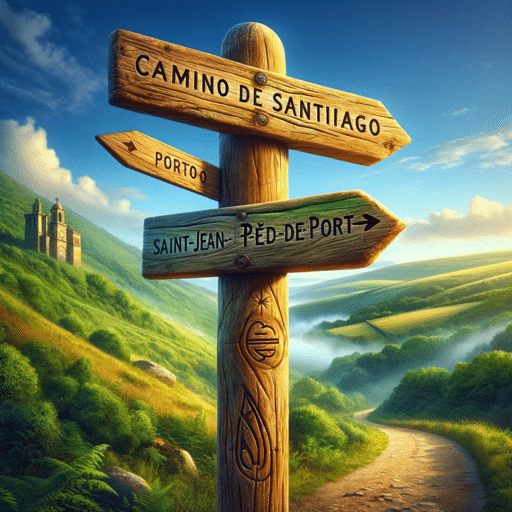Setting out on the Camino de Santiago, a series of pilgrim paths culminating at Spain’s Cathedral of Santiago de Compostela, offers a deeply rewarding and life-changing adventure. A common query among aspiring pilgrims is where one can commence this journey. “Can you start the Camino anywhere?” We’ll delve into this topic and offer valuable information to assist in organising your Camino adventure.
Understanding the Camino Routes
The Diverse Paths
The Camino de Santiago is not a single route but a collection of paths traversing various parts of Europe. The most popular is the Camino Francés, starting in Saint-Jean-Pied-de-Port, France. However, there are other routes like the Camino Portugués, Camino del Norte, Via Francigena, Camino Inglés, Camino Finisterre, and Via de la Plata, each with unique starting points.
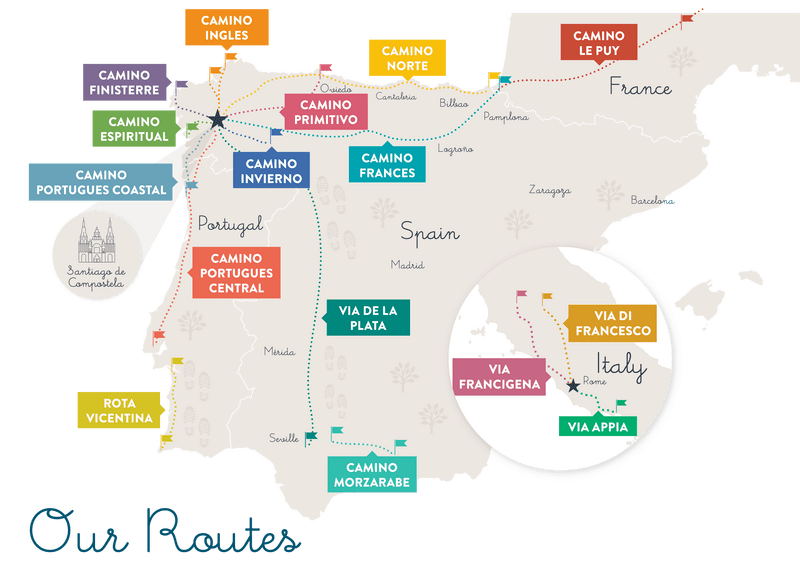
Route Versatility
Each route has its distinct charm, landscapes, and historical significance. The beauty of the Camino lies in its flexibility. Pilgrims can choose any route based on their preferences, physical capability, and the time they have available.
Personalising Your Camino Experience
Starting Where You Choose
The Camino offers the flexibility to start your journey from any point along its routes. Whether you have limited time or specific interests, you can begin from a location that suits your needs. This adaptability makes the Camino accessible to a wide range of pilgrims.
Shorter Walks
For those who cannot commit to long treks, starting closer to Santiago de Compostela is a popular option. It allows you to experience the essence of the Camino without the need for an extended pilgrimage.
Planning Your Journey
Researching Routes
Before deciding on your starting point, research the different Camino routes. Consider factors like difficulty, scenery, historical sites, and the type of experience you seek.
Understanding the Requirements
To earn the Compostela certificate, you need to walk at least the last 100 km or cycle the last 200 km to Santiago. Keep this in mind when choosing your starting point, especially if receiving the certificate is important to you.
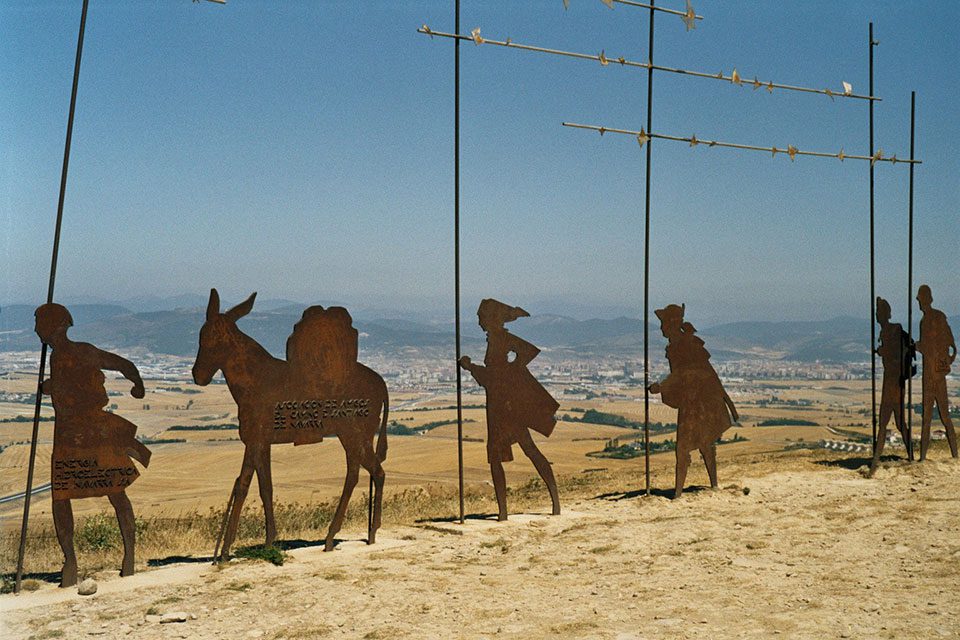
Where to start to walk the last 100km?
As mentioned above, pilgrims must walk at least the last 100 km of any Camino route into Santiago de Compostela to receive their Compostela pilgrim certificate. Our ‘Walking Camino Last 100km Collection’ is designed to get your official Camino Pilgrim certificate. It takes approximately one week to complete any of the last sections in Santiago de Compostela.
Below is a list of the most popular routes and their starting points to walk the last 100km of the Camino de Santiago.
- Camino Francés from Sarria to Santiago: renowned for its well-trodden paths and vibrant pilgrim community.
- Camino Portugués Coastal from Vigo to Santiago: offers stunning coastal views and a serene walking experience.
- Camino Espiritual Coastal from Vigo to Santiago: this path combines coastal beauty with spiritual depth.
- Via de la Plata from Ourense to Santiago: known for its natural thermal baths and historic significance.
- Camino de Invierno from Monforte to Santiago: this path provides a unique winter alternative with diverse landscapes.
- Camino Primitivo from Lugo to Santiago: known for its historical richness and less crowded paths.
- Via Francigena from Viterbo to Rome: extends the pilgrimage experience to Italy, offering a blend of Italian cultural and historical treasures.
- Camino del Norte From Vilalba to Santiago: this route is celebrated for its lush green landscapes and peaceful trails.
Each of these routes is steeped in history and offers a distinct experience, catering to the diverse preferences of pilgrims worldwide. Whether seeking scenic beauty, cultural richness, or a tranquil journey, these paths provide a fulfilling final stretch to Santiago de Compostela.
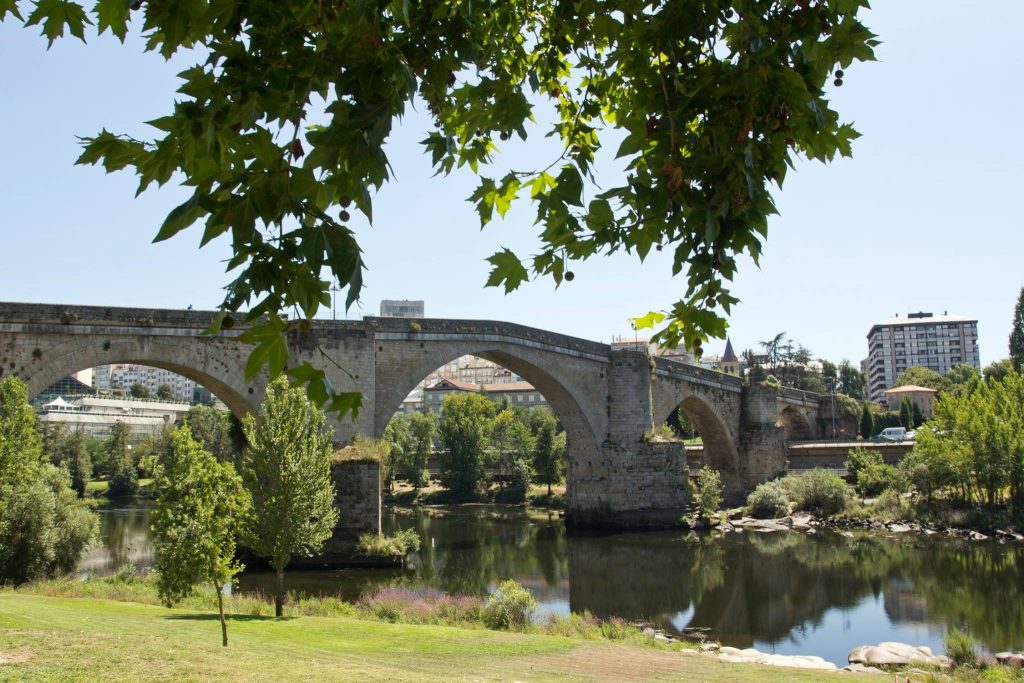
Where to start to cycle the last 200km?
Below is a list of the most popular routes and their starting points to cycle the last 200km of the Camino de Santiago.
- Camino Francés from Ponferrada to Santiago: A classic route with historical significance. It offers varied landscapes, including the famous Montes de León. Rich in cultural and religious sites, like the Cruz de Ferro.
- Camino Portugués Coastal from Porto to Santiago: Scenic coastal route with breathtaking ocean views. It passes through charming Portuguese towns and cities. Ideal for those seeking a blend of cultural and natural experiences.
- Camino del Norte from Navia to Santiago: Travels along the northern coast of Spain. Known for its lush landscapes and seaside towns. Offers a more challenging terrain with rewarding views.
- Full Camino Primitivo from Oviedo to Santiago: Considered the oldest Camino route. Features rugged landscapes and historic sites. A less crowded path, offering a more solitary experience.
- Camino Finisterre to Muxia: Extends beyond Santiago to the historic “End of the World” at Finisterre. Offers a mix of coastal and rural Galician scenery. Ideal for those looking to extend their pilgrimage beyond Santiago.
- Via Francigena from Lucca to Rome: An ancient route leading to the heart of Rome. Crosses through picturesque Tuscan landscapes. Rich in Italian cultural and historical heritage.
Each of these routes offers a unique way to experience the Camino de Santiago, catering to different preferences and expectations of cyclists. From the historic pathways of the Camino Francés to the coastal beauty of the Camino Portugués, and the rugged landscapes of the Camino Primitivo, there’s a route for every cyclist’s taste.
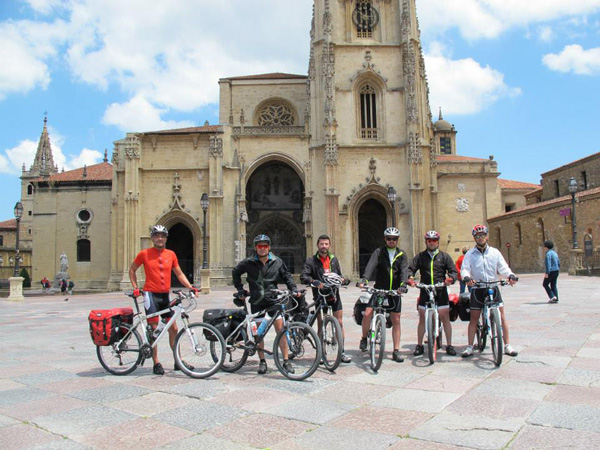
Embracing the Camino Spirit
Your Journey, Your Rules
The Camino is more than a physical journey; it’s a personal and spiritual experience. There is no right or wrong way to do it. Starting your walk from a place that resonates with you is perfectly acceptable.
The Community Aspect
Regardless of where you start, the Camino community is welcoming and inclusive. You’ll meet fellow pilgrims from all walks of life, each with their unique story and starting point.
Starting the Camino from any location is not only possible but also encouraged for those seeking a tailored pilgrimage experience. The Camino’s diverse routes and the ability to begin from various points make it a highly personal journey. Remember, the Camino is your own, and starting it from a place that holds meaning for you, or fits your circumstances, is part of what makes it so special. Whether you begin from the traditional starting points or somewhere along the route, your Camino journey will be a memorable and rewarding experience.
For more information about the Camino de Santiago routes or to book your trip, contact us.
